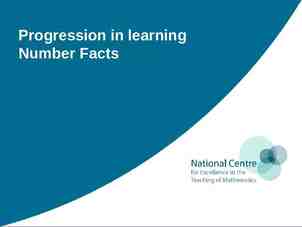AP Statistics: Chapter 20 Testing Hypotheses About Proportions
13 Slides525.00 KB
AP Statistics: Chapter 20 Testing Hypotheses About Proportions
Suppose we combine four decks of cards, and we suspect that they have been tampered with, such that the proportion of red cards is less than 0.5. Can we prove it if we look at less than half the deck? No Can we convince ourselves if we look at less than half the deck? Yes
Draw a sample of two cards. Suppose they are both black. Are you convinced that the true proportion of red cards is less than 0.5? Draw a sample of 20 cards. Suppose 8 are red. Are you convinced that the true proportion of red cards is less than 0.5? We still don’t know for sure, but we can quantify our uncertainty by finding out how unusual the above result would be if the true proportion of red cards were in fact 0.5.
We will conduct a hypothesis test in the following way: 1. Define the parameter . p proportion of red cards in the deck 2. State the null hypothesis and the alternative hypothesis . H0 : p p 0 Ha : p p 0 (p 0.5) (p 0.5)
3. Check the necessary conditions and assumptions for constructing a Normal model. * random selection: assume the 20 cards were drawn at random * Normal Condition: np0 20(0.5) 10 10 nq0 20(0.5) 10 10 The sampling distribution of proportions is approximately normal. * 10% condition: The population is more than 200 cards (4 decks 208). * Independence: It is reasonable to assume that the sampling proportions are independent.
Since there are at least 10 successes and 10 failures, the population of all cards in the deck is at least 200, and the data came from a random sample, the sampling model for Þ is approximately: N 0.5, 0.5 0.5 N 0.5, .1118 20
4. Name the procedure. A one-proportion z-test may be used. 5. Calculate the test statistic . z pˆ p 0 p0 q0 n 0.40 0.50 0.5 0.5 20 0.894
6. Obtain the p-value . p value P pˆ 0.4 P z 0.894 normacdf 1E 99, 0.4, 0.5, .1118 0.1855
7. Make a decision regarding the null hypothesis . Since the p-value is not unusually small we fail to reject the null hypothesis. 8. State your conclusion in context. If the true proportion of red cards (in a deck of 208) were 0.5, we would expect to see a sample proportion at least as extreme as the one we observed (0.4) in about 19 out of every 100 samples of this size (19%) if it is due to random chance alone. This is not strong enough evidence to conclude that the true proportion of red cards is less than 0.50 .
Remember PHANTOMS: P H A N T O M S PARAMETER HYPOTHESES ASSUMPTIONS & CONDITIONS NAME THE TEST TEST STATISTIC OBTAIN P-VALUE MAKE DECISION STATE CONCLUSION IN CONTEXT
1. A 1996 report from the U.S. Consumer Product Safety Commission claimed that at least 90% of all American homes have at least one smoke detector. A city’s fire department has been running a public safety campaign about smoke detectors consisting of posters, billboards, and ads on radio and TV and in the newspaper. The city wonders if this concerted effort has raised the local level above the 90% national rate. Building inspectors visit 400 randomly selected homes and find that 376 have smoke detectors. Is this strong evidence that the local rate is higher than the national rate?
2. There are supposed to be 20% orange M&M’s. Suppose a bag of has only orange ones. Does this contradict the company’s 20% claim? Note that this is a two-tailed test.
3. In a given year, 13.5% of employed people in the United States reported belonging to a union. Officials from a large city contacted a random sample of 2000 city workers and 240 claimed union membership. Is there sufficient evidence to conclude that the proportion of workers in this city who are union members is different from the national rate?


















